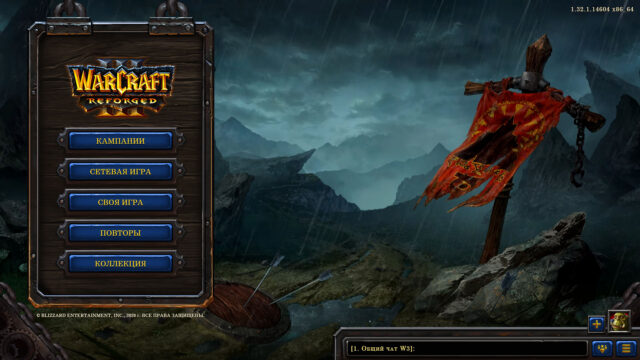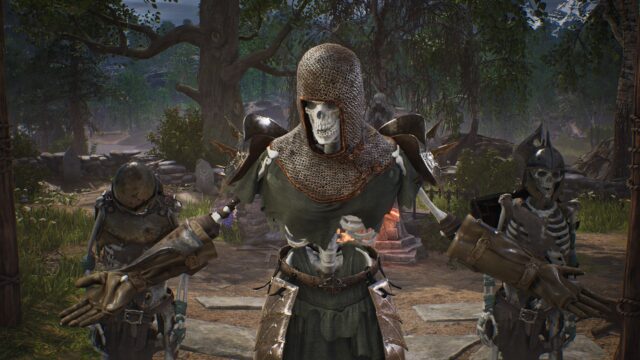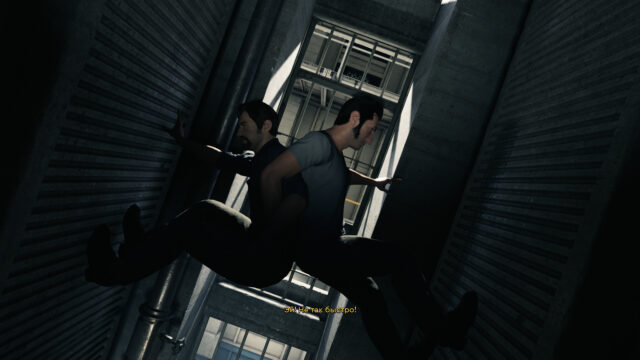Middle-earth: Shadow of Mordor Siege Edition Review
In the bearded year of 2014, I remember, Middle-earth: Shadow of Mordor It became an unexpectedly pleasant surprise for us from the category of “look how far technology has come”, although we had little faith in it. A narrative game with a complex ecosystem of procedurally generated enemies? Yeah, they found fools! Leave these tales to Peter Molyneux with his real-time growing trees, and while you’re at it, tell Sean Murray too. It’s all fantasy, it doesn’t exist, end of story.
Monolith proved that it does exist after all. Their miracle mechanic, Nemesis, capable of churning out dozens of decent antagonists from the Middle-earth orc trash, somehow successfully came to life and essentially carried an otherwise ordinary action sandbox game. The concept turned out to be unusual and interesting enough that even many Tolkienist gamers, recovering from a canon overdose, eventually acknowledged the right to exist for such a free fanfiction.
Shadow of War, for the most part, also does everything right. It doesn’t violate the law of sequel continuity, doesn’t contradict the advertising brochures, and makes the classic promises of “more of the same, but bigger” – a textbook example of a sequel. However, that’s where the problem lies: we didn’t actually need more of the same and bigger to that extent.
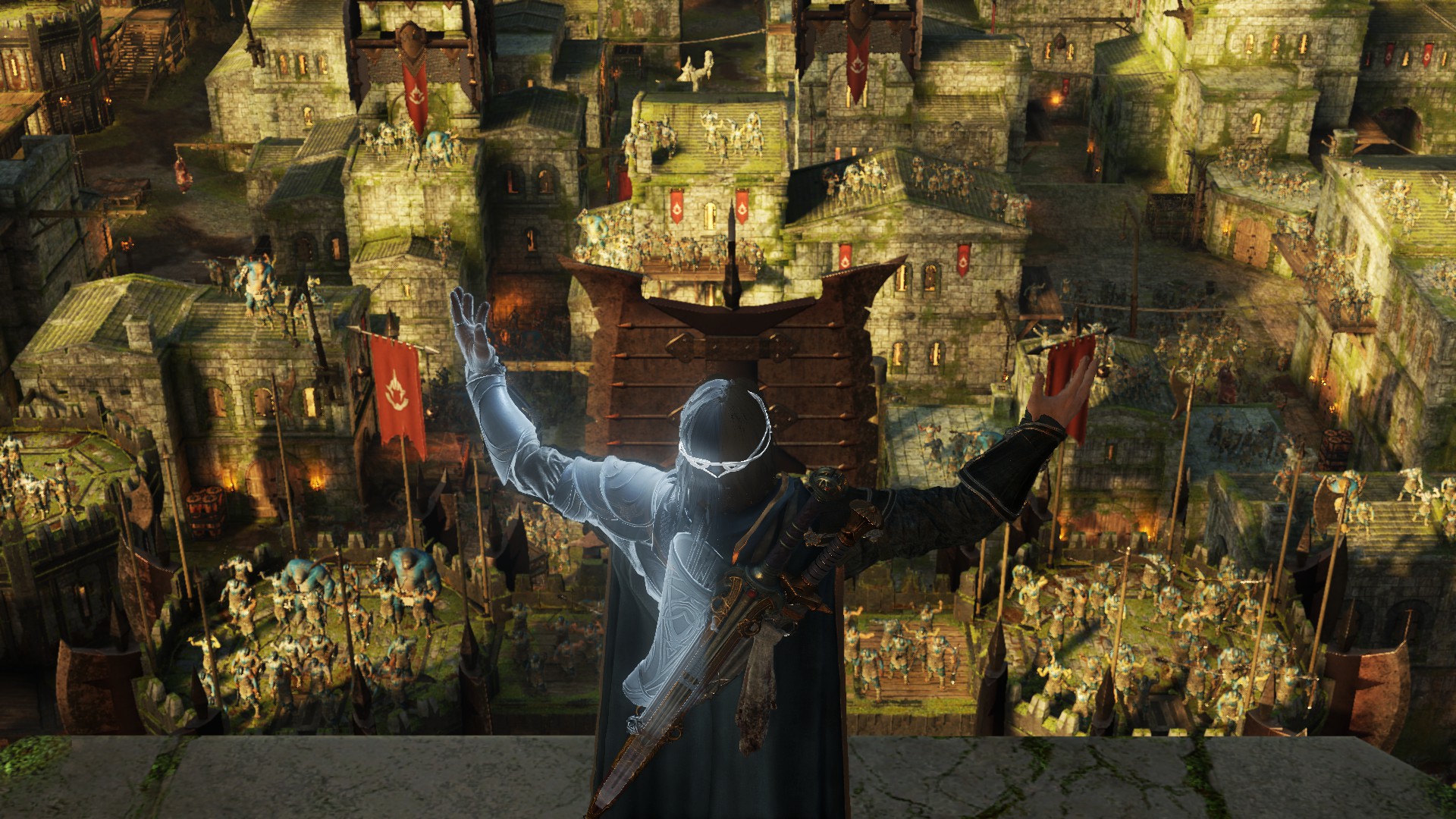
It is, of course, good when a new game copies the best ideas of its predecessor. The mentioned system of sworn enemies is still pleasing and now, despite not undergoing any major changes, it generally works according to familiar rules. The surroundings are still populated by orcs of various kinds and ranks, whose randomly assigned personalities we are free to cut down with a sword or recruit to the light side of the Force. The essence is similar, only the nuances of interaction have slightly increased.
One of the most noticeable improvements is that captains now adapt on the fly to your fighting style. If you persistently “spam” a combo with stun attacks, for example, an orc will eventually figure out your tactic and learn to counter with defensive strikes. Some clever ones are even capable of overcoming their own weaknesses, which means you have to rely not only on a dry list of vulnerabilities but also on your inventiveness in battle.

In addition, the free people of Mordor have been grouped into tribes, but this decision is more organizational than functional. That is, certain characteristics are no longer distributed randomly, but directly depend on the breed: for example, only Mystics will counterattack with teleportation, Marauders dramatically shoot with both hands, and followers of Horror are known for their mastery of Kratos-like blades on chains. In a clash, this will help to roughly estimate what trump cards the opponent has up their sleeve, but that’s about it.
Throughout the game, there is a feeling that this mishmash of tribes is simply undercooked. They were given unique designs, distinctive combat features, monuments were erected, and even a whole range of trailers was dedicated to them – but in practice, there is almost no benefit. It looks beautiful, impressive, but, uh, why? Considering that the crazy orcs themselves are not averse to engaging in prolonged conflicts, it would be great to at least involve clan disputes here, with the ability to add fuel to the fire of internecine wars.
The rest is all minor behavioral algorithms that nevertheless smooth out the rough edges of the generator and give the overall picture credibility. Here, a toothy face accurately notes that you approached it from a high place, there a cowardly leader justifies himself by saying that last time he “didn’t run away, but retreated.” Later, the blood brother of a berserker killed a couple of hours ago sets up an ambush, and your bodyguard stabs you in the back with a dagger because he’s tired of being on the receiving end of his lord’s hot hand. Whatever happens, it seems that Shadow of War is prepared to react to all life situations, and you can’t stop being amazed by it for a long time.
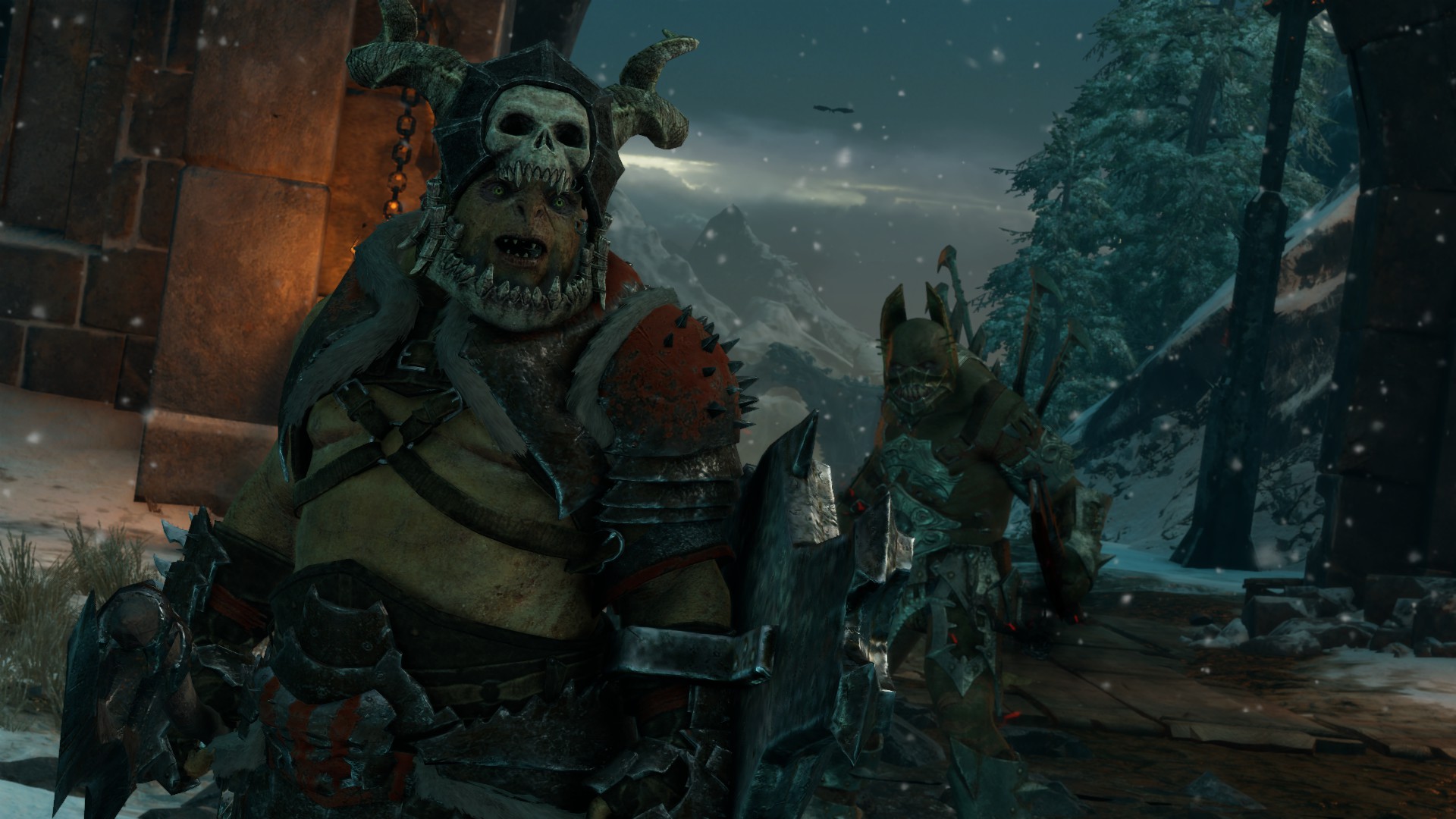
Carefully planned betrayal is in full swing. Just a moment more, and the leader will learn a lot of new things about his entourage.
Having a variety of interesting tools at his disposal, the virtual director named Nemesis sometimes creates much more personalized, intricate, and complex scenes than before. In my playthrough, one such story unfolded from the very prologue, when I left the enemy captain to die from the bites of poisonous insects. However, he not only cheated death but returned as the literal lord of flies, nicknamed “Grisha the Flyman,” with a clear intention to kill me.
Just as revenge is about to be fulfilled at the very last moment, an allied Uruk crossbowman, whom I once helped settle a score with a long-time tormentor, interferes. Following him, in the spotlight, appears my sworn enemy from the first part of the game (praise the import function) and mockingly asks how many more surprises will jump out of the bushes when he brings me to my knees. At the same moment, a brutal Olog-hai with a mark on his green face looms behind me. He doesn’t say anything, but with a piercing scream, he lets me know that we are acquainted before charging forward. The battle begins – unequal, unexpected, but it’s mine.
Such sketches are the true charm of Shadow of War. The large, complex system skillfully juggles variables, resulting in a remarkably personal and emotional experience. You remember and immerse yourself in hatred towards the enemies, purely subjective. The unfortunate Grisha the Flyman must die not so much because of the plot’s directive but because you have your own scores to settle with him.
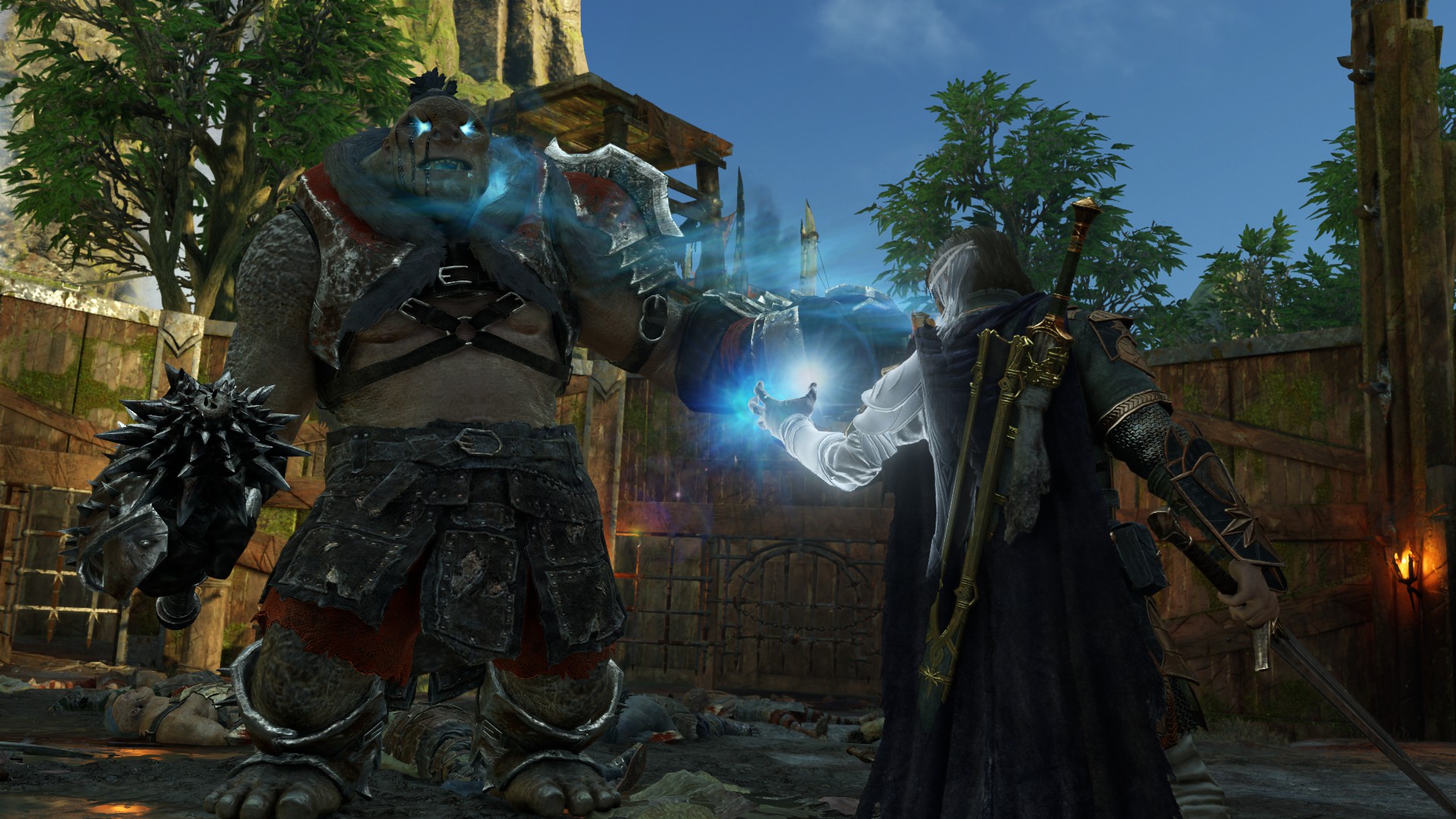
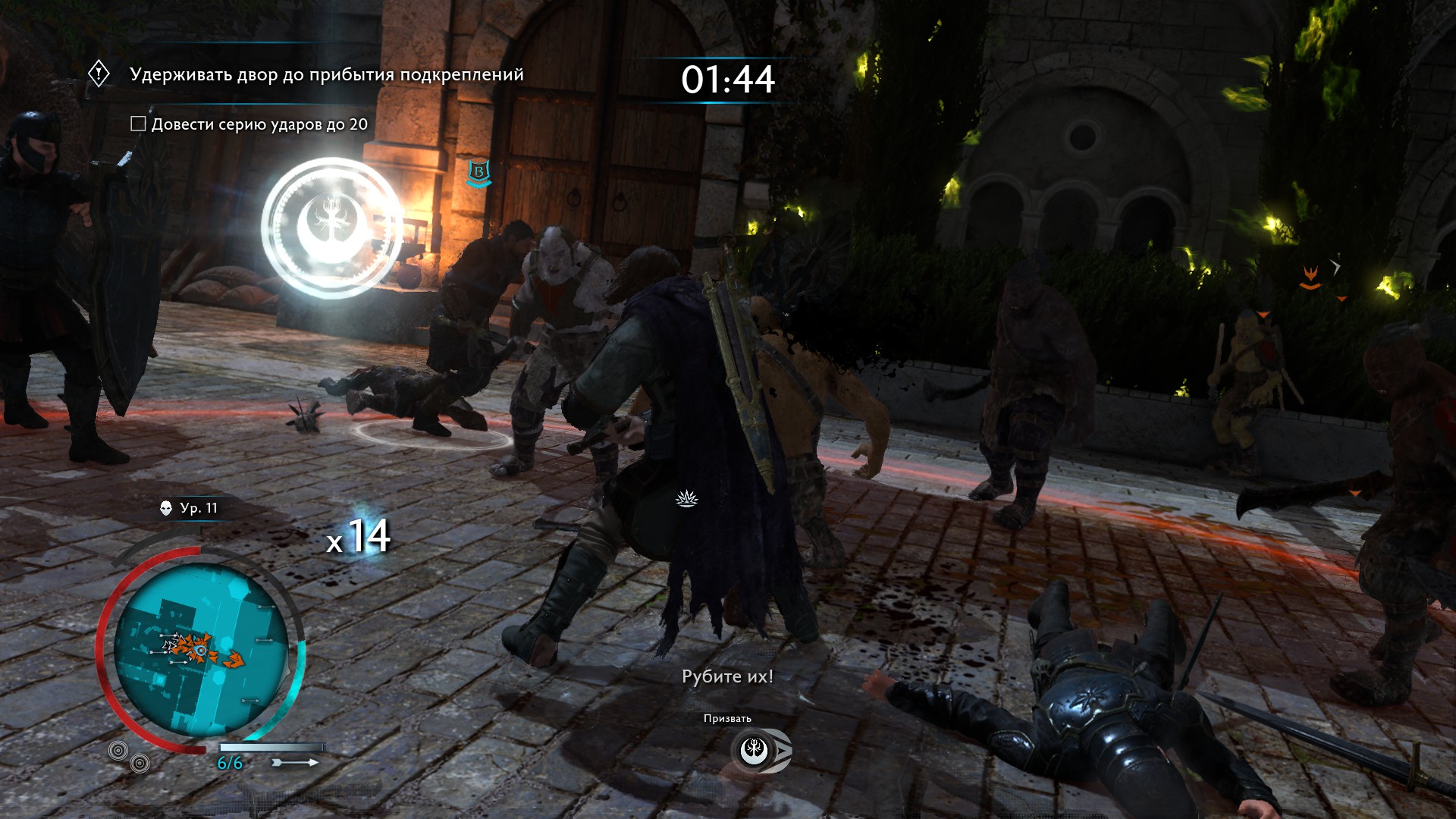
Unfortunately, everything that was bad in Shadow of Mordor, and especially everything that is bad in it now, the sequel also undoubtedly inherits. It is absolutely the same bland open world of 2014, down to the details like the skill tree, battle animations, and camera angles. Okay, back then it was at least tolerable, if not cool and juicy, but now the combat system “like Batman’s” is openly mocked in the neighborhood.
The only significant update in the circus program is fortress sieges. Each of the available regions in the game is equipped with a stronghold, which sooner or later you will be asked to take care of privatizing. And although the process itself is not much different from what was shown at E3, personally participating in it turned out to be not very exciting.
What looked like a third-person Total War with Mount Doom in the background turned out to be a primitive mini-game about capturing control points. Naturally, there is a real spectacle happening all around: catapult projectiles cut through the sky, trolls pound on walls, dozens of orcs burn in dragon fire in front of the gates, and so on – the spectacle is truly epic and captivating the first few times. Here it is, war! Here it is, “The Lord of the Rings”!
And then you stand in a strictly defined zone and perform the same rehearsed combat pirouettes for three years. Because nothing more is required of you.

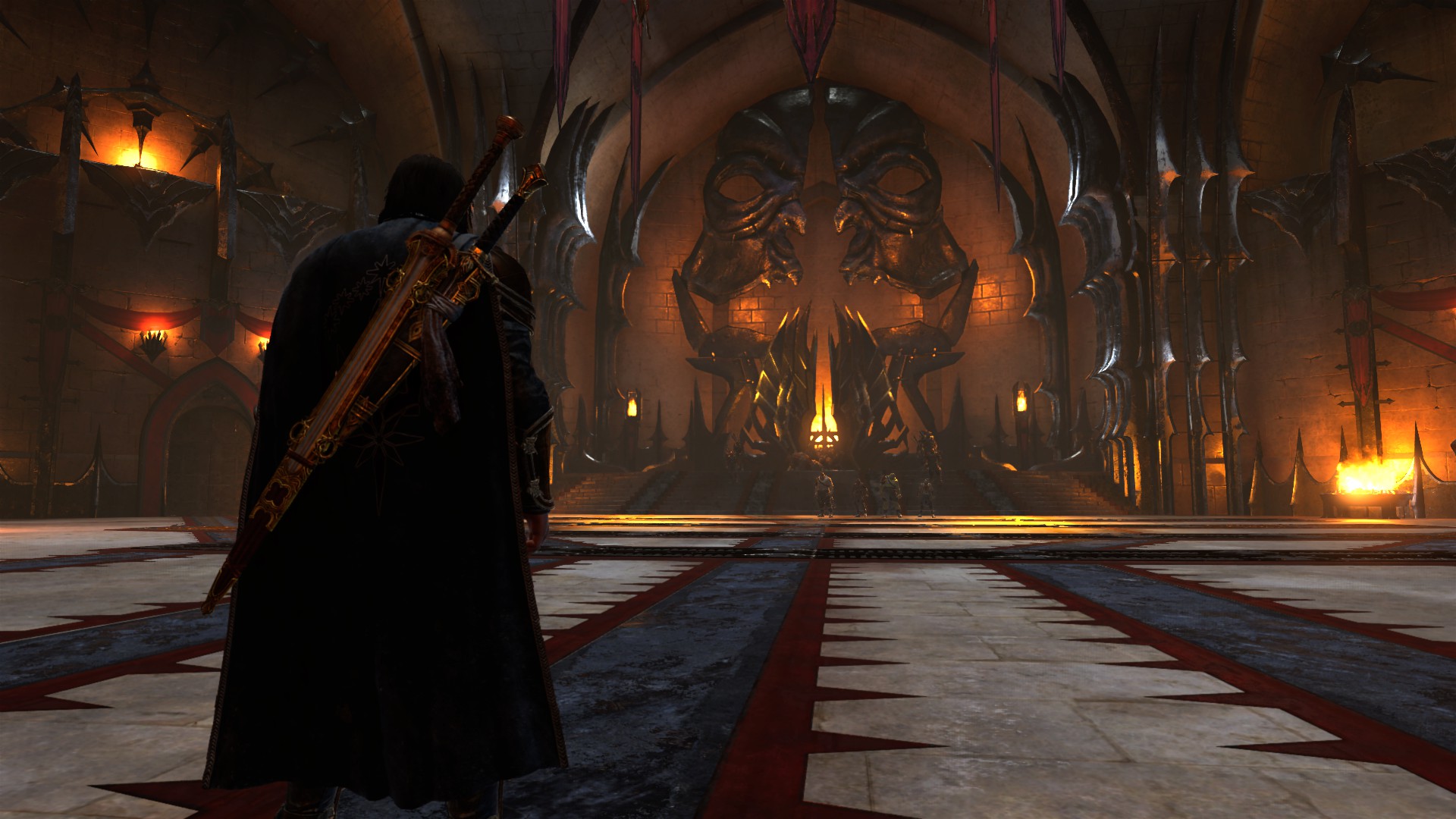
A change of scenery in no way affects the rules of the game, except that from all sides there is a rush of about four times more various husks with axes, the extermination of which does not even give experience. The praised interaction between friendly captains and enemy commanders is reduced to a couple of amusing remarks before the start, and the final meeting with the head of the institution, whose throne room is 70% made up of built-in flamethrowers, resembles the first 3D adventures, although it looks like an attempt to make an exciting boss fight.
Moreover, the siege lacks variability. A shabby fort differs from a gigantic castle only in the number of capture points, and various defensive structures are more often ignored than pose a serious threat. There are no unique tasks for a specific fortress, no strategy in actions, not even an interesting level design – please enjoy the volume missions that become boring much faster than the game itself seems.

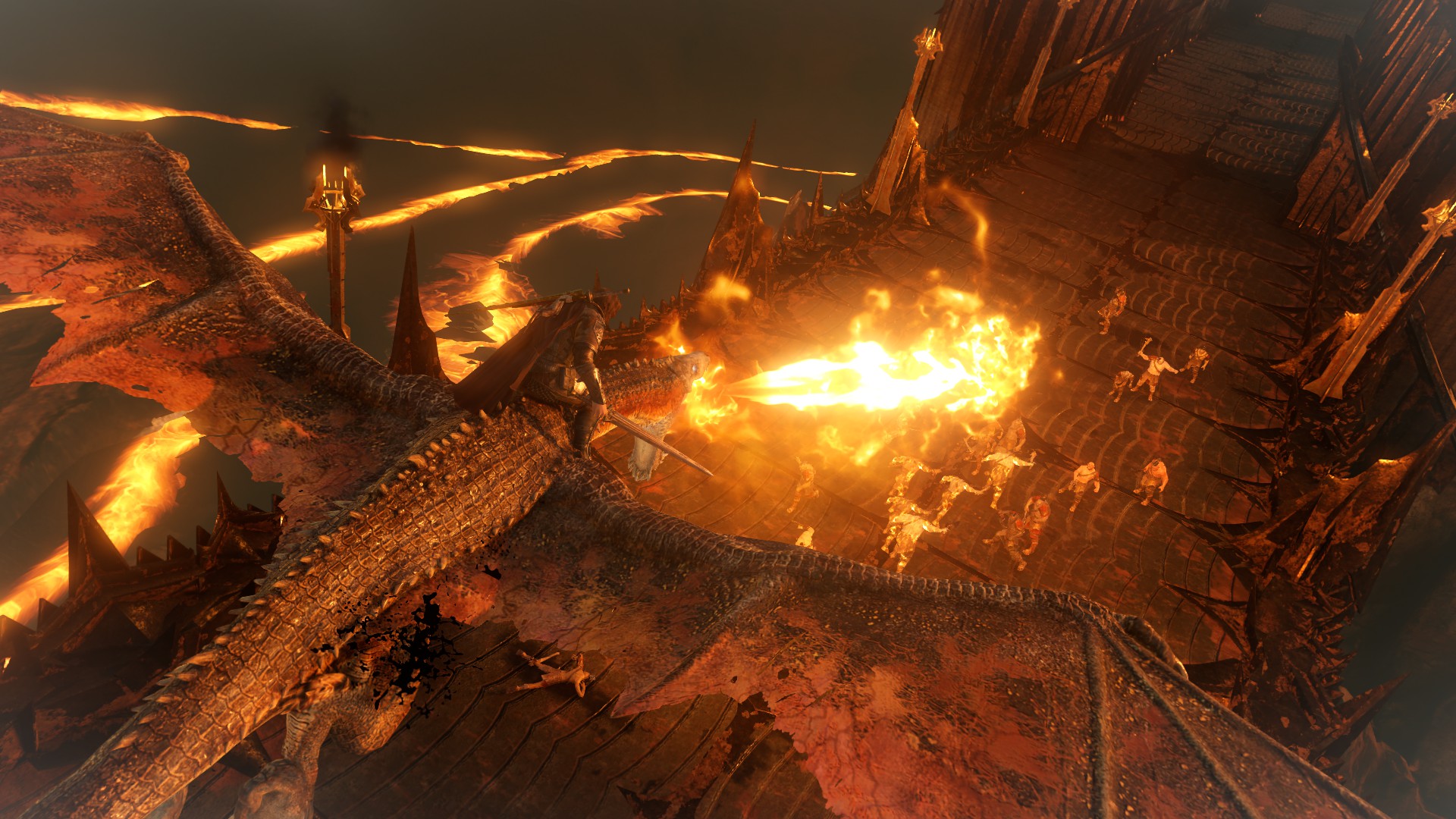
The range of riding animals has been supplemented with a long-awaited dragon.
By the way, this applies to the entire Shadow of War – it simply doesn’t know when to stop. The mediocre open world of the first part worked, not least because it was exhausted in a reasonable 15-20 hours, if you didn’t spend too much time in lengthy descriptions of the lore. The sequel not only didn’t follow suit, but on the contrary, it inflated everything that could be inflated by two or three times.
Here, for about 10 hours, they only explain the principles of their grandiose systems. From a user’s point of view, both the “Nemesis” and the sieges are certainly not explained in the most obvious way, but the tutorial is so slow and meticulous that you get tired of the game before you even learn how to control it.
And the new sandbox, to be honest, doesn’t give much reason for enthusiasm. The standard “collectibles,” capturing outposts, randomly generated encounters with captains, side quests to rescue 218 prisoners of war and poison 46 grog barrels – it’s all the same as before (or like in any other project), just in a hyperbolized form. Instead of two locations, they made five, colorful and visually appealing, but just as empty and hostile inside.

And now there is loot here as well. Armor, daggers, bows, swords, and other wardrobe elements constantly pour out from enemies, monuments, quests, and just randomly, which you should ideally change once in an eternity for the coveted “+0.0002% damage” and the rest of the time mercilessly convert into money. The latter is usually spent on siege upgrades and the hated loot boxes of today.
We won’t delve into the ethical side of microtransactions – no one really forces them on you, and those same people who spend their salary on knives in CS:GO probably gladly pay for advantages in a single-player game. But still, we’ll say this: there is nothing dumber in all of Shadow of War than the store with loot boxes.
For the simple reason that the idea itself is stitched here with white thread and stands out more than the annoying hints on a third of the screen and the unattractive interface elements. The thought that someone seriously believed that war-torn Middle-earth has a place for trips to weapon shops and a gambling chase for “legendaries” worries me even more than the mercenary nature of modern publishers.
If anything, orcs have also been equated to drops from purchased cases for some reason. The best specimens of “Nemesis” still roam virtual spaces peacefully – so what’s the point? The witty Marauder-bard, performing verses about our shameful demise, can be found on his own, and you can level him up to the level of “donate” comrades in a matter of minutes, thanks to the abundance of opportunities on the storyline path.
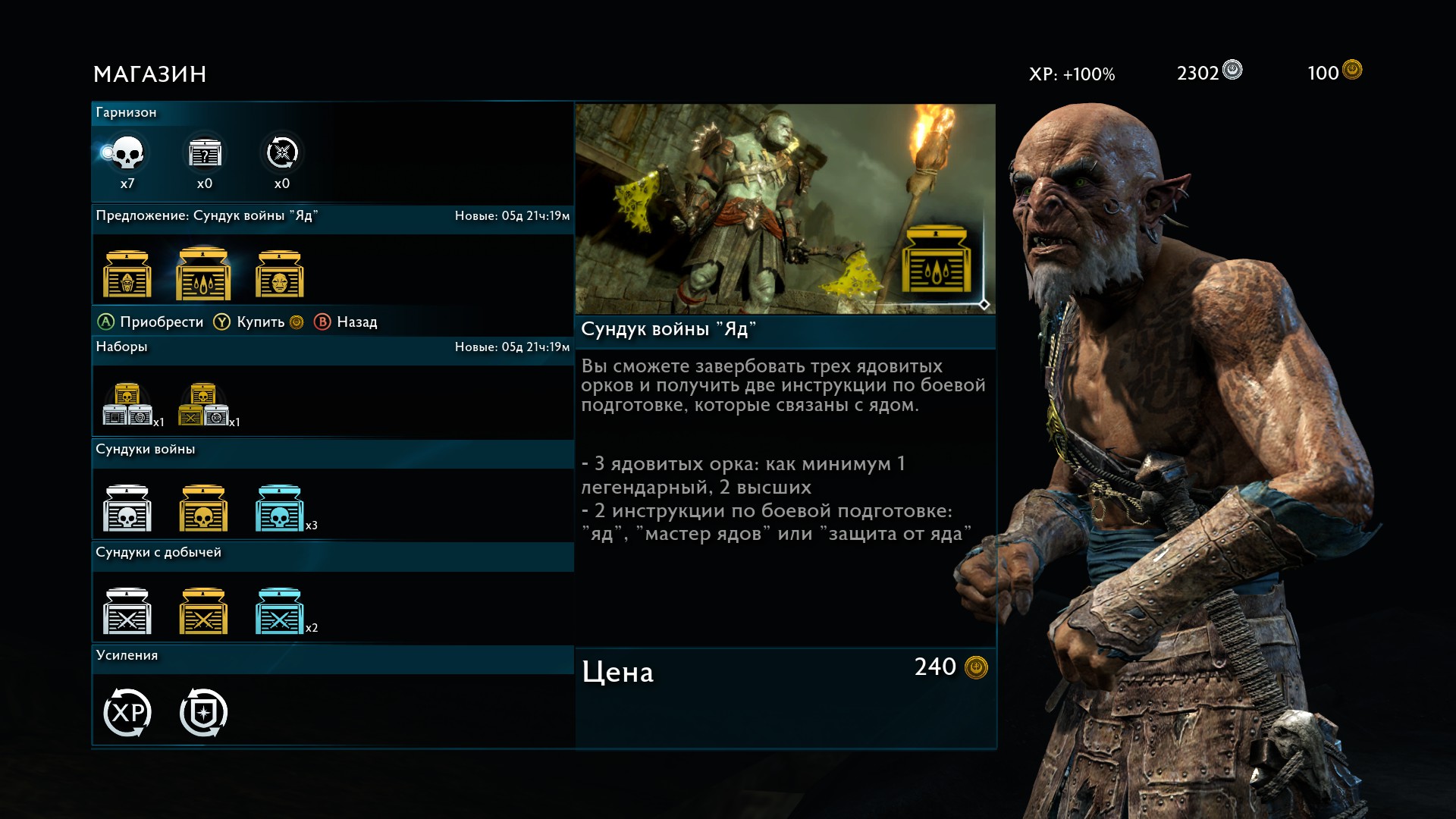
Oh, right! Somewhere in the depths of Shadow of War, there is still a plot, but over time it hasn’t really evolved, remaining a backdrop for the orcish “Game of Thrones”. The useless ranger Talion and his body-sharing neighbor, the ghostly elf Celebrimbor, forge a new Ring of Power and continue their crusade against Sauron. In general, that’s it.
To be fair, the narrative is slightly enlivened by a few parallel arcs, but the feeling that instead of a story, we were given some pointless tribute to the stars of Mordor still persists. Yes, the heroes will encounter Shelob, visit the future Minas Morgul, deliver a powerful blow to a Balrog, cross swords with the Witch-King himself, and much more – it’s all great fan service, undoubtedly, but it doesn’t come together into a substantial plotline.
But it’s no wonder we’re talking about the plot at the end: Shadow of War, as expected, is more about gameplay mechanics than a coherent script and quality execution. However, these mechanics once again fall short, leaving the brilliant concept of the Nemesis system without worthy gameplay support.
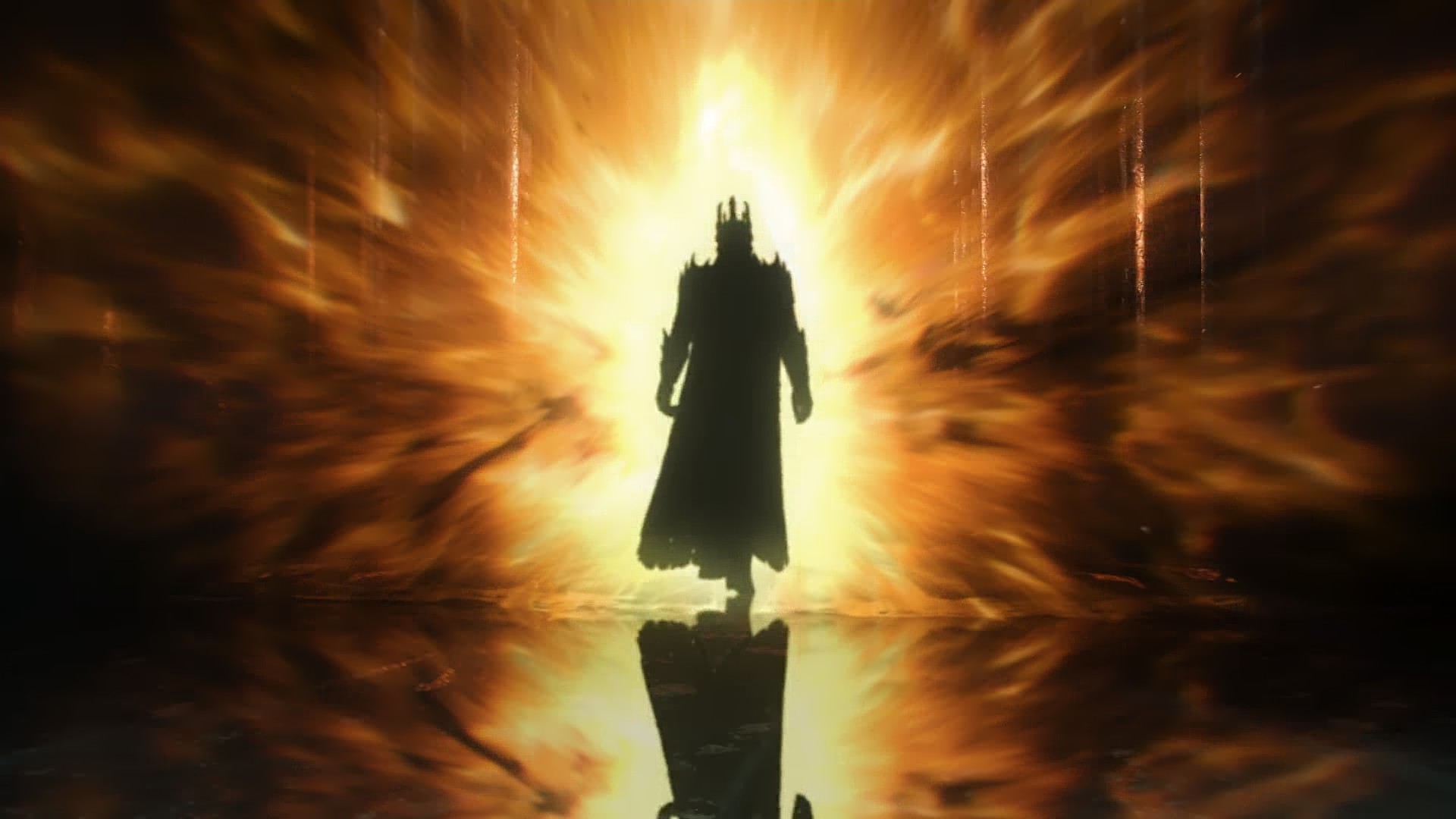
The game needed changes, not just standard sequel improvements. Where it leans towards RPG, I want a real “role-playing game” instead of schematic add-ons – maybe even a little bit. Dragon’s Dogma Through the European prism. Where strategy is visible, the soul yearns for tactical tricks and well-thought-out sieges. Where, in the end, one must fight, a combat system is needed that has not remained in the backyards of the previous generation.
“Nemesis,” on the other hand, has blossomed even brighter, so we sincerely wish her to find a better haven than another October sandbox.
And if you accidentally missed the original game, confidently add 10 points to Shadow of War above the score below. It is definitely worth experiencing it for the first time.
Share
Discuss
More Reviews

